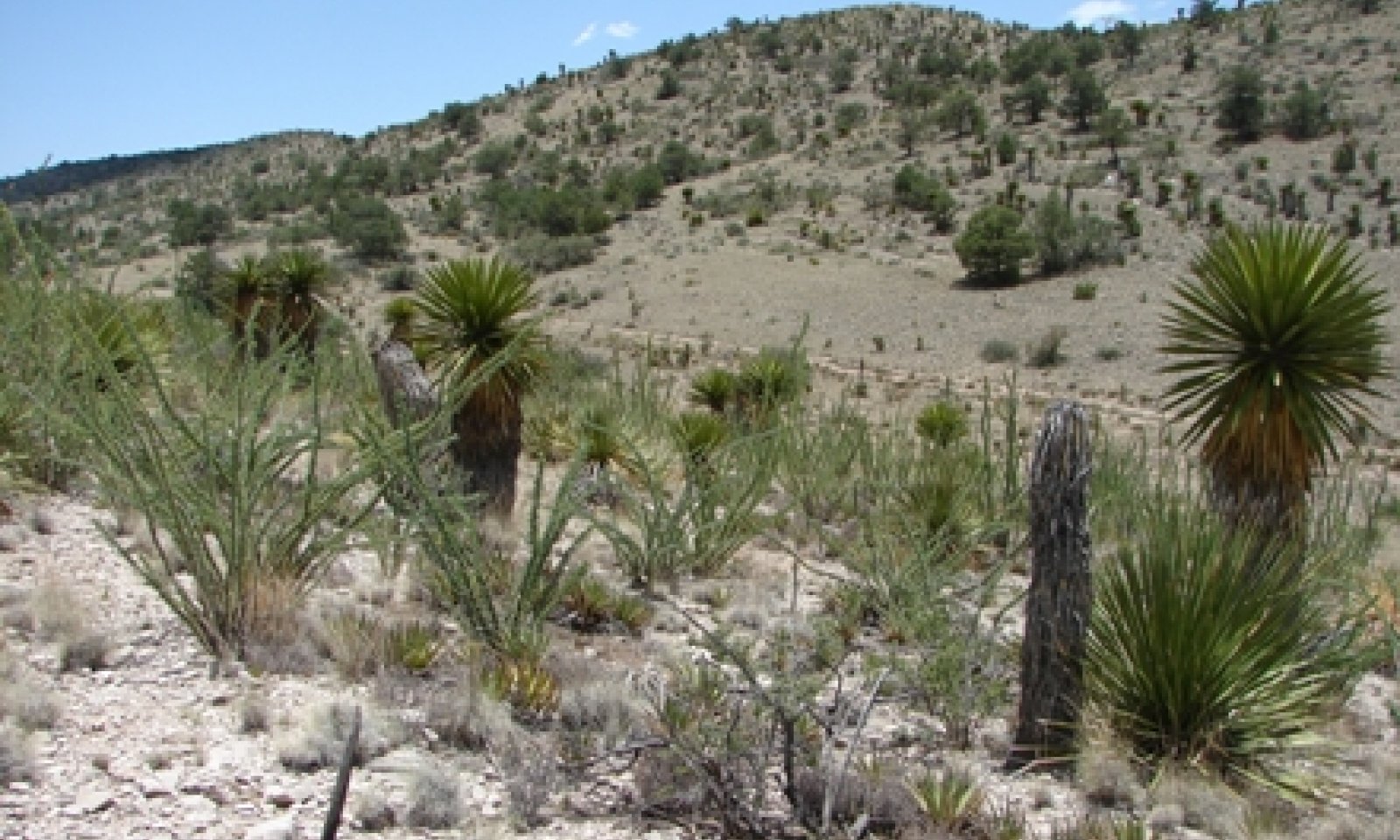
Limestone Hills
Scenario model
Current ecosystem state
Select a state
Management practices/drivers
Select a transition or restoration pathway
- Transition T1A More details
- Restoration pathway R2A More details
-
No transition or restoration pathway between the selected states has been described
Target ecosystem state
Select a state
Description
The Midgrass/Mixed-shrub/Forb community is characterized by midgrasses such as blue grama, sidoats grama, curlyleaf muhly, and black grama and shrubs such as yuccas, sotol, ocotillo, and lechuguilla. Some redberry juniper and wavyleaf oak along with a higher productivity of grasses can be found in some south facing slopes, usually in higher elevations or in areas transitioning to a cooler and wetter climate. The overall warmer and drier soil climate in this community limits trees such as pinyon pine and gray oak. In more mesic areas where this site occurs such as Guadalupe Mountains National Park, fine fuel productivity is higher and fire does play a role in suppression shrubs.
The Shortgrass/Shrub community is the result of palatable grasses such as blue grama and black grama decreasing while unpalatable grasses such as threeawns, hairy grama, slim tridens increase. Annual grasses and forbs are more abundant in this phase.
Submodel
Description
The Shrub/Succulent State is the result of heavy continuous grazing. Abundant increaser shrubs (> 35% cover) such as lechuguilla and/or sotol are indicators of this community. There are some areas with abundant ocotillo and it is unknown if this is completely attributed to past disturbances such as heavy continuous grazing or if they with are within the inherent variability of the site.
Restoration practices are very limited in this state. Steepness and rough slopes prevents many brush management treatments such as chemical and/or mechanical treatments. Fine fuels will have to recover before prescribed fire is an option on low relief areas. Prescribed fire is usually not attempted on very steep rocky slopes.
Submodel
State 3
Pine/Oak Savanna State - North Facing Slopes



Description
The Midgrass/Tree/Shrub Community (3.1) is the reference community for the north facing slopes or in mesic areas of the site. Pinyon pine, redberry juniper, wavyleaf oak are scattered among grasses such as blue grama, sideoats grama, curlyleaf muhly, New Mexico muhly, and New Mexico feathergrass.
The Shortgrass/Tree/Shrub Community (3.2) is the result of heavy continuous grazing. Palatable grasses such as blue grama and New Mexico muhly decrease while unpalatable grasses such as threeawns, hairy grama, slim tridens increase.
The Pine/Oak/Mixed-grass Woodland Community (3.3) is the result of heavy continuous grazing which reduces the fine fuels needed to carry a fire. This phase can also result from fire suppression alone. Canopy cover of pinyon pine is greater than 50 percent.
Submodel
Mechanism
With improper grazing management and fire suppression, the Grass/Shrubland State will transition into the Shrub/Succulent State.
Mechanism
With Prescribed or No Grazing and Prescribed Burning (only at low relief areas and where adequate fuel are present) conservation practices applied to the plant community, the Shrub/Succulent State can be restored to the Grass/Shrubland State.
Relevant conservation practices
| Practice | External resources |
|---|---|
|
Prescribed Burning |
|
|
Prescribed Grazing |
Model keys
Briefcase
Add ecological sites and Major Land Resource Areas to your briefcase by clicking on the briefcase (![]() ) icon wherever it occurs. Drag and drop items to reorder. Cookies are used to store briefcase items between browsing sessions. Because of this, the number of items that can be added to your briefcase is limited, and briefcase items added on one device and browser cannot be accessed from another device or browser. Users who do not wish to place cookies on their devices should not use the briefcase tool. Briefcase cookies serve no other purpose than described here and are deleted whenever browsing history is cleared.
) icon wherever it occurs. Drag and drop items to reorder. Cookies are used to store briefcase items between browsing sessions. Because of this, the number of items that can be added to your briefcase is limited, and briefcase items added on one device and browser cannot be accessed from another device or browser. Users who do not wish to place cookies on their devices should not use the briefcase tool. Briefcase cookies serve no other purpose than described here and are deleted whenever browsing history is cleared.
Ecological sites
Major Land Resource Areas
The Ecosystem Dynamics Interpretive Tool is an information system framework developed by the USDA-ARS Jornada Experimental Range, USDA Natural Resources Conservation Service, and New Mexico State University.

